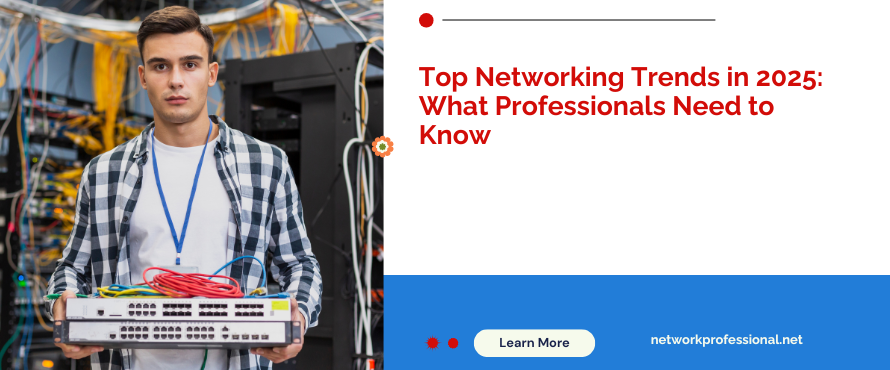As technology evolves at a rapid pace, networking professionals must stay ahead of emerging trends to remain competitive and ensure robust infrastructure performance. The year 2025 promises groundbreaking advancements and challenges in the networking field. Here, we delve into the top networking trends for 2025 and what they mean for professionals in the industry.
By focusing on the top networking trends in 2025, professionals can better prepare for the demands of the future.
1. Rise of 5G and Beyond
5G networks have been transformative, but by Top Networking Trends in 2025, the focus will shift to 5G advancements and the early developments of 6G. These technologies will offer:
- Ultra-high-speed connectivity.
- Reduced latency for real-time applications.
- Enhanced capacity for IoT devices.
Professionals need to understand how to implement and optimize these networks for diverse use cases, from smart cities to autonomous vehicles.
2. Growth of SD-WAN Adoption
Software-Defined Wide Area Networks (SD-WAN) are becoming the standard for managing enterprise networks. By 2025, SD-WAN technology will:
- Provide better integration with cloud services.
- Enhance network security through integrated firewalls and encryption.
- Offer increased flexibility and cost-efficiency for businesses.
Understanding SD-WAN deployment and maintenance will be critical for network engineers and architects.
3. Increased Focus on Network Security in Top Networking Trends in 2025
Cybersecurity threats are growing in complexity, and networks are prime targets. Among the top networking trends in 2025, key areas to watch include:
- Zero Trust Network Access (ZTNA): A “never trust, always verify” model.
- AI-driven threat detection and response.
- Secure Access Service Edge (SASE) frameworks combining networking and security.
Networking professionals must prioritize security as an integral part of their designs and operations.
4. IoT Networking Evolution
The Internet of Things (IoT) is expanding into industries such as healthcare, agriculture, and manufacturing. Among the top networking trends in 2025, networking professionals will face:
- Challenges in managing millions of connected devices.
- Need for scalable and reliable IoT protocols like MQTT and CoAP.
- Demand for edge computing to process data closer to its source.
Skills in IoT network management will be invaluable.
5. Artificial Intelligence in Networking
AI and machine learning are transforming how networks are managed and optimized. Among the top networking trends in 2025, expect:
- Automated network management and troubleshooting.
- Predictive analytics to anticipate and mitigate network failures.
- Intelligent traffic routing for improved performance.
Professionals should familiarize themselves with AI-driven tools and their applications in networking.
6. Sustainability in Networking
Environmental concerns are driving efforts to make networks more energy-efficient. Key innovations include:
- Green data centers with energy-efficient hardware.
- Renewable energy sources for powering network infrastructure.
- Smart routing to minimize energy consumption.
Understanding sustainable practices will be crucial for networking professionals.
7. Cloud Networking Dominance
Cloud-based networks are becoming the backbone of businesses. The trends for 2025 include:
- Hybrid and multi-cloud environments for greater flexibility.
- Enhanced cloud security measures.
- Cloud-native networking tools for improved scalability.
Networking professionals must adapt to managing and optimizing these cloud-based systems.
Preparing for the Future
To stay relevant and excel in the evolving field of networking, professionals should:
- Continuously update their knowledge through certifications and training.
- Leverage emerging technologies to streamline network management.
- Engage with industry communities to stay informed about trends and best practices.
Conclusion
The networking landscape in 2025 will be defined by innovation, security, and sustainability. By understanding and embracing the top networking trends in 2025, networking professionals can position themselves as invaluable assets to their organizations. The time to prepare for the future of networking is now.


Leave A Comment